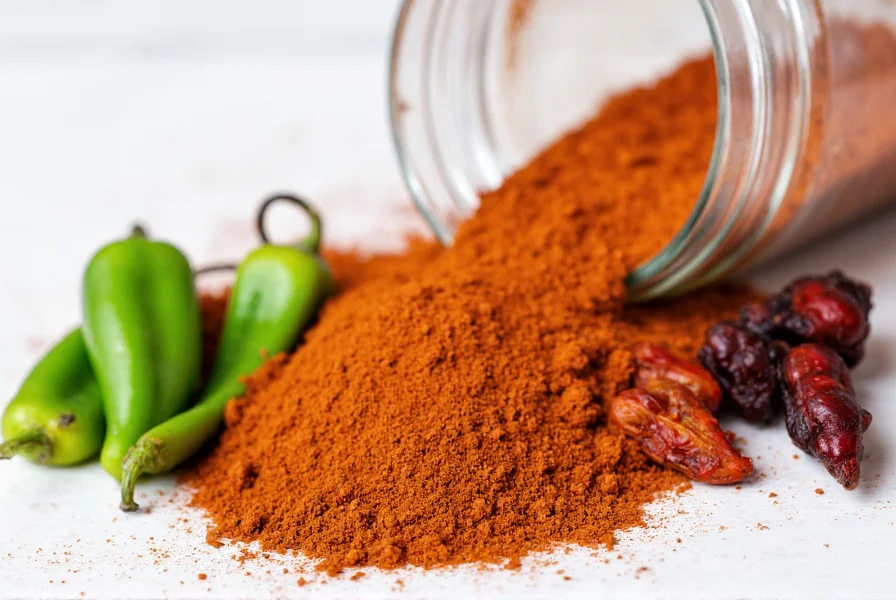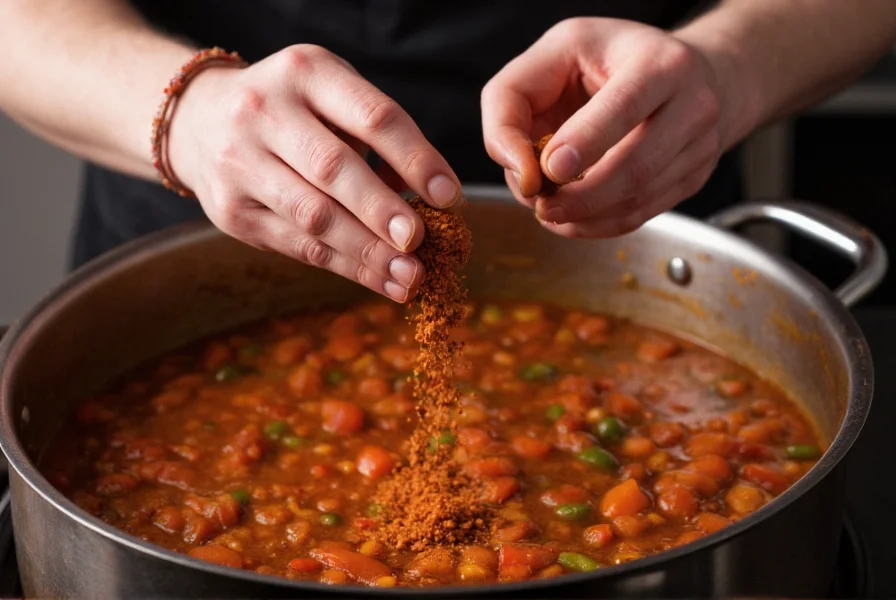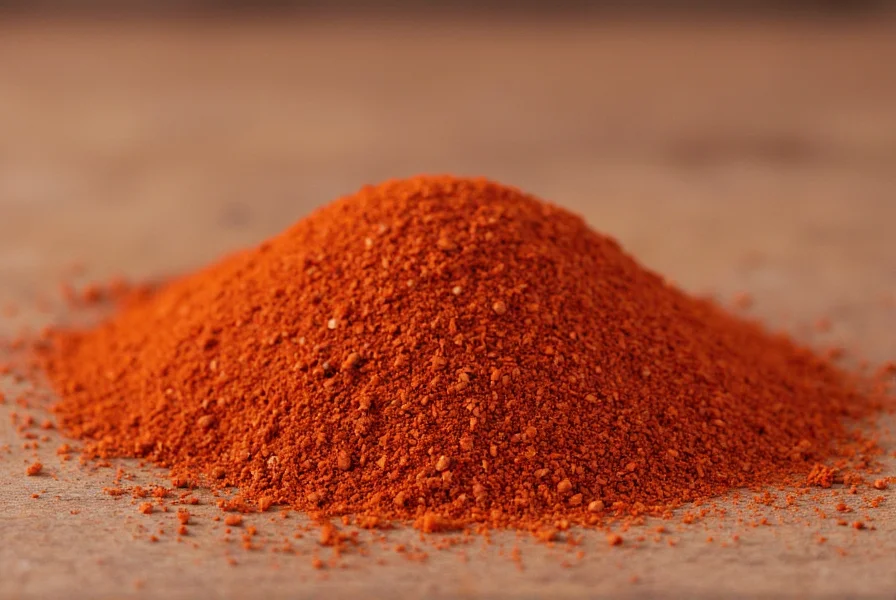Understanding ground chipotle pepper begins with recognizing its origins. This spice comes from ripe red jalapeños that undergo a smoking and drying process, transforming them into chipotles. When these dried peppers are finely ground, they become the convenient spice known as ground chipotle pepper. Unlike chipotle peppers in adobo sauce—which contain vinegar and spices—ground chipotle offers pure smoky heat without additional flavors or moisture.
What Makes Ground Chipotle Pepper Unique
The magic of ground chipotle pepper lies in its dual flavor profile: smokiness from the drying process combined with the natural fruitiness of ripe jalapeños. This creates a complex taste that's simultaneously earthy, slightly sweet, and moderately spicy. The heat level sits comfortably in the medium range on the Scoville scale (2,500-8,000 units), making it accessible for most palates while still providing noticeable warmth.
| Pepper Type | Scoville Heat Units | Flavor Profile |
|---|---|---|
| Ground Chipotle Pepper | 2,500-8,000 | Smoky, earthy, slightly sweet |
| Ancho Powder | 1,000-2,000 | Fruity, raisin-like, mild |
| Guajillo Powder | 2,500-5,000 | Tangy, berry-like, moderate heat |
| Cayenne Powder | 30,000-50,000 | Sharp, bright, intensely hot |
Practical Uses for Ground Chipotle Pepper
Ground chipotle pepper shines in applications where you want smoky depth without the liquid content of adobo sauce. It works exceptionally well as a dry rub for meats—particularly chicken, pork, and beef—where it adheres better than wet sauces. When making chili, barbecue sauce, or mole, adding 1/2 to 1 teaspoon of ground chipotle pepper enhances complexity without altering the recipe's liquid balance.
Chefs appreciate ground chipotle pepper for its consistency and shelf stability compared to canned alternatives. Unlike chipotle in adobo, which requires refrigeration after opening and has a limited shelf life, ground chipotle pepper maintains its flavor for 1-2 years when stored properly in an airtight container away from light and heat.

How to Use Ground Chipotle Pepper Effectively
Start with small amounts—1/4 to 1/2 teaspoon per serving—and adjust to taste. Because the flavor intensifies as it cooks, add ground chipotle pepper early in the cooking process for dishes like stews and braises to allow the smokiness to permeate throughout. For finishing touches on dishes like guacamole or deviled eggs, use it more sparingly to provide a subtle background note.
When substituting ground chipotle for chipotle in adobo, use this ratio: 1 teaspoon ground chipotle pepper equals one chopped chipotle pepper in adobo sauce. Remember to reduce other liquids in your recipe by 1-2 teaspoons to compensate for the missing adobo sauce.
Creating Balanced Flavor Profiles
Ground chipotle pepper pairs beautifully with complementary flavors that enhance its smoky character. Consider these successful combinations:
- With sweet elements: Honey, brown sugar, or roasted sweet potatoes balance the heat while enhancing the pepper's natural fruitiness
- With acidic components: Lime juice or vinegar cuts through the richness and brightens the smoky notes
- With earthy spices: Cumin, oregano, and garlic create a harmonious flavor foundation for Mexican and Southwestern dishes
- With creamy textures: Avocado, sour cream, or cheese provide cooling contrast to the moderate heat
Common Mistakes to Avoid
Many home cooks make these errors when using ground chipotle pepper:
- Overestimating heat tolerance: Start with less than you think you need—the heat builds gradually
- Adding too late in cooking: For maximum flavor integration, add early in the cooking process for most dishes
- Storing improperly: Keep in an airtight container away from light and heat to preserve flavor for 1-2 years
- Mixing with incompatible flavors: Avoid pairing with delicate herbs like basil or dill that get overwhelmed

Simple Recipe Applications
Try these straightforward applications to experience ground chipotle pepper's versatility:
Chipotle Roasted Sweet Potatoes: Toss cubed sweet potatoes with 1 tablespoon olive oil, 1/2 teaspoon ground chipotle pepper, 1/4 teaspoon garlic powder, and salt. Roast at 400°F until caramelized (25-30 minutes).
Smoky Black Bean Soup: Add 1 teaspoon ground chipotle pepper when sautéing onions and garlic at the beginning of cooking. The spice will bloom in the oil, distributing flavor throughout the soup.
Chipotle Mayo: Mix 1/4 teaspoon ground chipotle pepper with 1/2 cup mayonnaise, 1 teaspoon lime juice, and a pinch of salt for a versatile condiment.
Storage and Shelf Life
Store ground chipotle pepper in an airtight container away from direct light and heat sources. Properly stored, it maintains optimal flavor for 1-2 years. To test if your spice has lost potency, rub a small amount between your fingers—if you can't detect the characteristic smoky aroma, it's time to replace it. Avoid storing spices above the stove or near other heat sources, as temperature fluctuations degrade quality more quickly.











 浙公网安备
33010002000092号
浙公网安备
33010002000092号 浙B2-20120091-4
浙B2-20120091-4